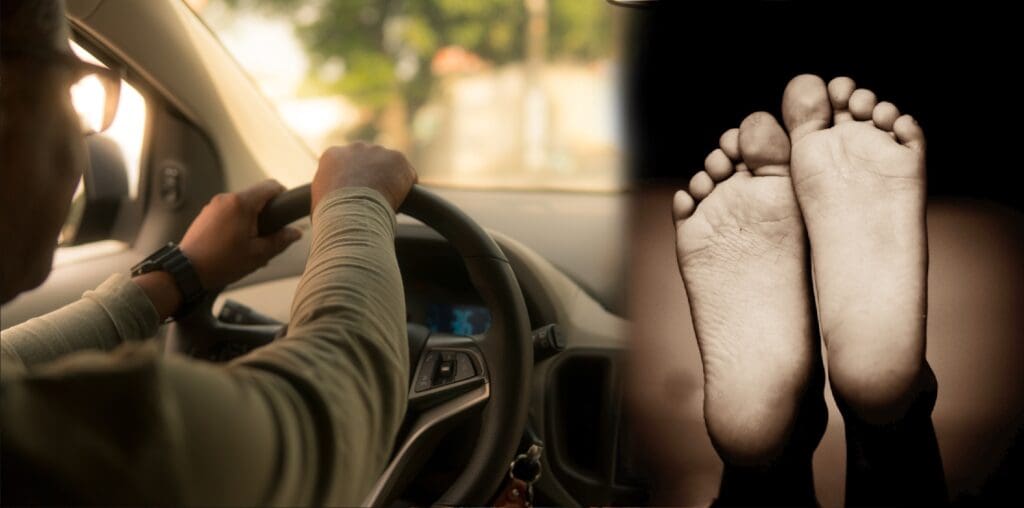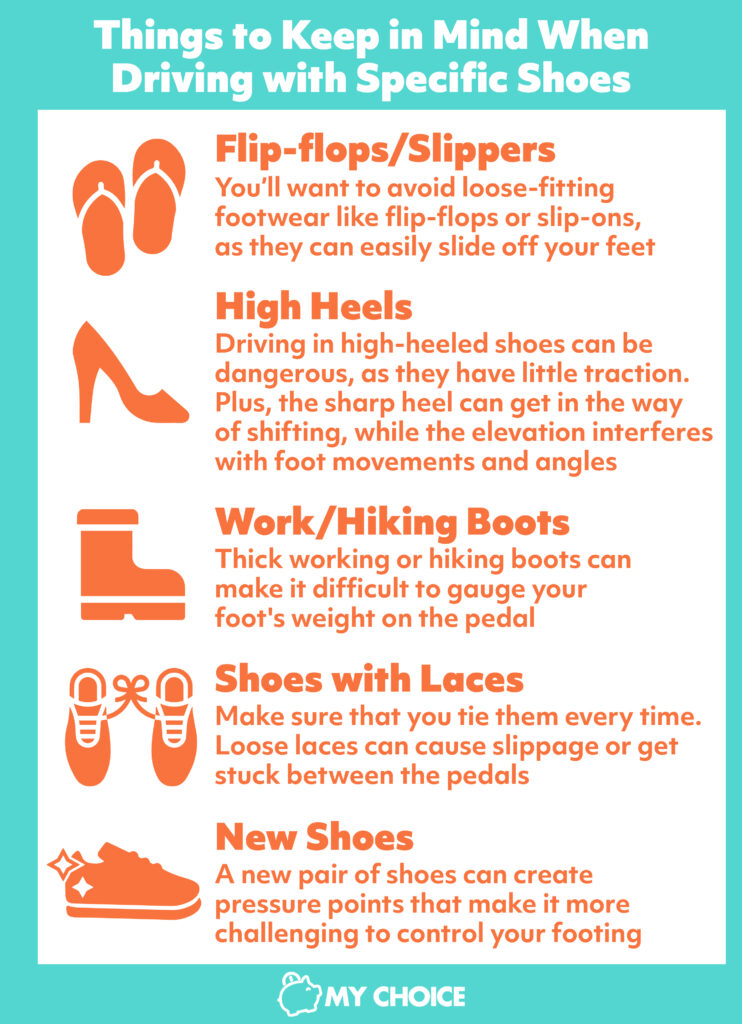
Contrary to popular belief, it isn’t illegal to drive barefoot in Ontario. However, barefoot driving can occasionally lead to reckless driving, so many Canadian regions still recommend against it.
Still, this so-called “urban legend” has been around for years and can confuse new drivers. Read on to learn about driving laws regarding footwear and how to stay safe on the road.
Driving Barefoot In Ontario
According to the Ontario Highway Traffic Act, driving barefoot is not illegal, whether you drive a closed, four-wheel vehicle or a motorcycle. Similarly, it is also completely legal to drive in socks.
While it’s unclear where the myth surrounding driving barefoot originated, many Canadian drivers believe it because driving with footwear is more generally accepted and considered safer.
If not wearing shoes causes you to drive recklessly, you can still get fined or ticketed. In addition, while no state authorities outright ban barefoot driving, specific cities and municipalities may impose regulations against it.
Is It Safe To Drive Without Shoes?
While it isn’t illegal to drive barefoot in Ontario, doing so can pose many risks. For instance, bare feet do not have as much friction as shoes. As such, getting your feet wet before driving can cause the foot to slip off the pedal frequently. In addition, you may not be able to apply brake force efficiently, causing you to jerk or skid.
Without enough weight pushing down on the pedal, you can’t modulate speed effectively, leading to a higher risk of injury. According to a British automobile insurer, 27% of drivers who experience accidents yearly blame barefoot driving as a cause.
Is it Illegal To Drive In Flip-Flops?
It’s not illegal to drive in flip-flops. However, flip-flops don’t give you enough protection for your feet, especially if you get in a frontal collision. While it’s technically not illegal, it’s not a good idea either.
What Shoes Are Best For Driving?
Not all footwear is suited for driving. As a general rule, you shouldn’t wear shoes that make it difficult to gauge how much you press down on the pedal or impede your ability to shift quickly.
Overall, the safest footwear for driving is closed-toe shoes like sneakers, boots, or rubber shoes that you wear often. Shoes without heels provide excellent control over speed and braking. Pack an extra pair for driving if you need heeled shoes for work or an event.
Below are some things to keep in mind when driving with specific shoes:
- Flip-flops/slippers: You’ll want to avoid loose-fitting footwear like flip-flops or slip-ons, as they can easily slide off your feet.
- High heels: Driving in high-heeled shoes can be dangerous, as they have little traction. In addition, the sharp heel can get in the way of shifting, while the elevation interferes with foot movements and angles.
- Work/hiking boots: Thick working or hiking boots can make it difficult to gauge your foot’s weight on the pedal. If you can’t calculate weight and pressure accurately, you risk accelerating too fast or braking too late.
- Shoes with laces: If you often wear shoes with laces, ensure that you tie them every time. Loose laces can cause slippage or get stuck between the pedals.
- New shoes: New shoes can also pose a problem, especially if you’ve yet to break them in. If you aren’t used to a new pair of shoes, they can create pressure points that make it more challenging to control your footing.

The Bottom Line
Just because driving barefoot isn’t illegal in Ontario, it doesn’t mean it’s the best way to go. Paying attention to what shoes you wear while driving can improve your safety habits on the road. Another way to ensure you and your vehicle are protected is through comprehensive insurance.
MyChoice makes vehicle insurance as accessible as possible, providing additional coverage and protection for Canadian drivers so give us a try today!








